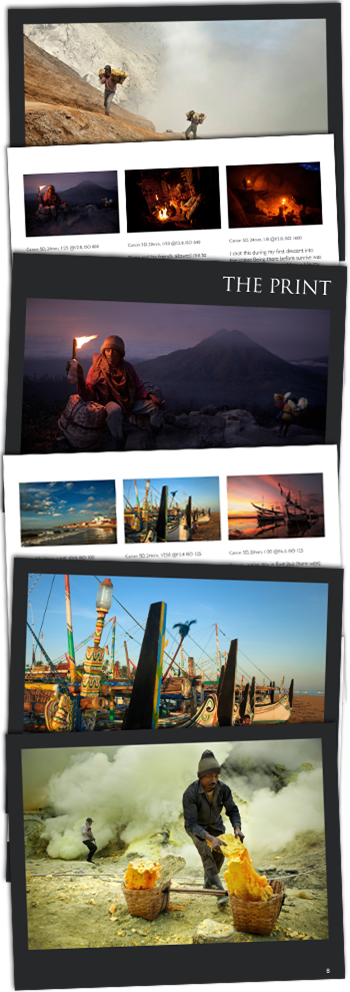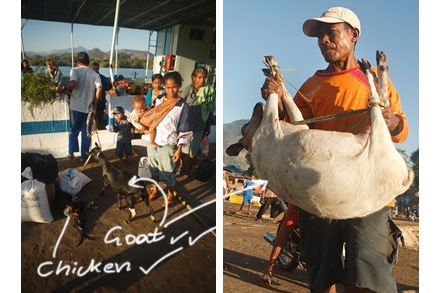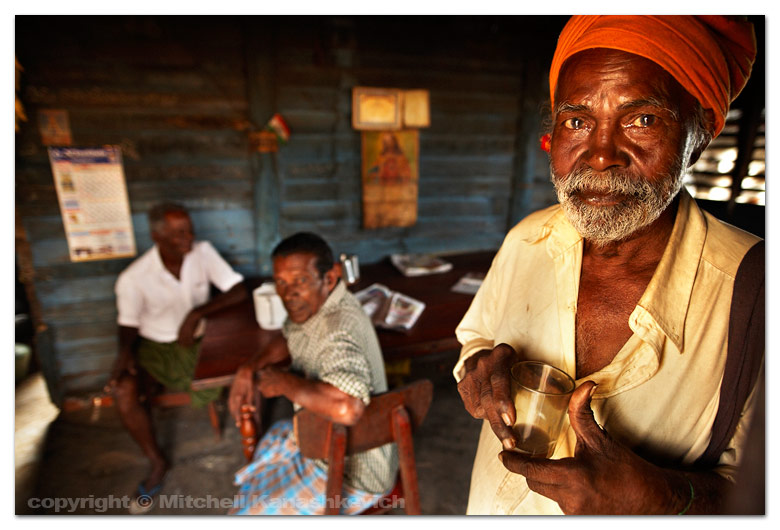When you drink four chocolate milkshakes at a Western cafe, when you would rather chat to other travelers than take photos, when you arrive at a camel market, but don’t care about shooting anything and just want to catch up on sleep—that’s when you know you’re getting tired, getting close to burning out.
Merry Christmas from Addis Ababa
My dream has finally come true. I’m in Africa! Addis Ababa, Ethiopia, to be exact. Well, ok, the Addis Ababa part of it is far from a dream. To me the city seems like one big tragedy of humanity - a strange fuse of colonial and socialist architecture as well as tin-shacks that make up most of the small shops and all the slum dwellings. The city is overwhelming in many different ways - beggars, street hustlers, noise, pollution - a little of everything. Nevertheless, this is Africa! I have wanted to come here since I was a child and now I’m here at last.
Like a Fairytale
The villages of Spiti Valley are ridiculously picturesque. The landscapes, the people’s faces, in some cases, their costumes and in others, the combination of everything, I often feel like I am in a fairytale. It’s hard to believe that such places still exist, but I sure am glad that they do. Dhankar was one of the more fairytale-like villages that we visited and here are some images from there.
Dear aspiring travel photographer
New eBook - Journey Through Java
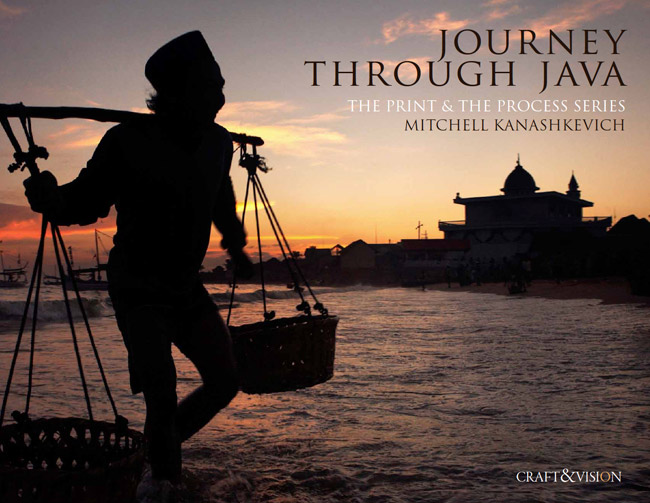 Hello good people of the Cyberworld! I have a new eBook out! As you probably gathered from the image above, it’s called “Journey through Java”. This one is a collaboration with David duChemin’s “Craft and Vision” team and it is a part of their very popular “Print and Process” series. Basically, it’s my photos and words, their structure and design.
Hello good people of the Cyberworld! I have a new eBook out! As you probably gathered from the image above, it’s called “Journey through Java”. This one is a collaboration with David duChemin’s “Craft and Vision” team and it is a part of their very popular “Print and Process” series. Basically, it’s my photos and words, their structure and design.
Those of you who have been following my blog for some time are aware that I have known this duChemin fellow for a while. I think quite highly of the man, so when David approached me about doing one or possibly even a few eBooks for the “Print and Process” series, I said - “Sure thing mate!”
What really excites me about this eBook is the fact that the structure of it allowed me to focus on a specific stretch of time during my photographic journeys and as a result I was able to delve deeper into my photographic process than ever before. The eBook is fairly personal, but at the same time, the knowledge one should come away with is applicable on a very wide scale.
There’s talk about the equipment used, the technical aspects (every image has the Exif data provided) as well as composition and light. These things are all discussed in a very practical sense, as they relate to the images included in the eBook. There is a somewhat philosophical side to what I’ve written too. In this eBook I really wanted to touch on what makes a photograph more than a snapshot or an overused cliché and so I’ve devoted a whole section to the discussion of what it means to create shots that are deep, original and express what the photographer feels to the fullest.
Who is this eBook for? It is for anyone who enjoys my photography and wants to know how I go about creating my work. I do however feel that the eBook will be particularly useful for the serious amateurs who want their photos to be more than “pretty pictures” as well as those thinking of doing travel and documentary photography for a living.
The really good part for all of you strapped for cash is - it’s only $5! And if you use the promotional code JAVA4 as you check out from Paypal, you’ll get it for $4 (offer expires 11:59pm PST October 3, 2010).
To purchaseor for more info, head over to the “Craft and Vision” site HERE or click the cover shot at the top. As always, your support is really appreciated!
I’m still in Port Villa as I write this, but heading home soon. More photos and hopefully some videos to come soon.
A blast from the past.
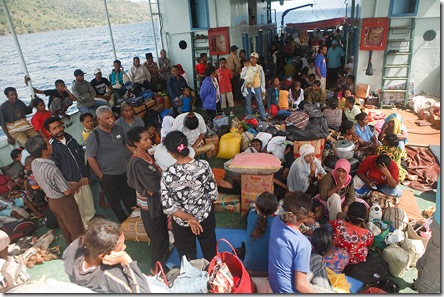 Well, again it’s been much too long since my last post. I’ve been busy – yes. But I did have a few ideas that I wanted to share here. Unfortunately my ideas for posts often take very long to cook up and when they do, they sometimes start morphing into something completely different.
Well, again it’s been much too long since my last post. I’ve been busy – yes. But I did have a few ideas that I wanted to share here. Unfortunately my ideas for posts often take very long to cook up and when they do, they sometimes start morphing into something completely different.
I have many things on my plate at the moment. There are several things I’m working on at once - one of them is another e-book. This one is going to be on lighting for travel photographers and those on the move. It’ll cover the use of off camera flash, reflector and of course natural light. The e-book will be similar format to “Understanding Post Processing” in that I will break down how certain images of mine were created. But there will be more examples, diagrams/illustrations of light set ups and lots of explanations. I’m pretty excited about it, but more on that in the coming days (or weeks).
The post from the beginning of the month “Some words to aspiring travel photographers” seems to have struck a chord with many and as I was sorting through some images from Indonesia, I came across photos from that ferry I mentioned. The one packed with goats, chickens, furniture, dry fish and lovely fellow passengers who chain-smoke and continuously spit on the floor.
And so, rather than bore you with a half-thought-out blog post, I leave you with images taken on the morning of our 16 hour, overnight ferry ride from an island called Lembata to one called Alor. The photo at the top of the page is obviously of the fellow passengers who didn’t impress me much with their smoking and spitting. I guess the image doesn’t do them “justice”.
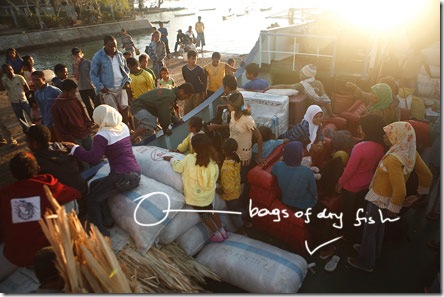
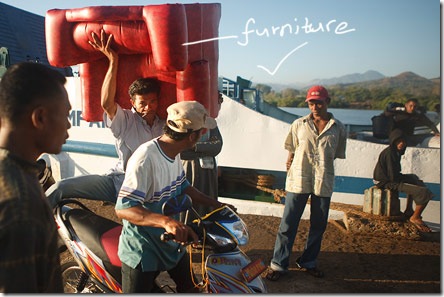
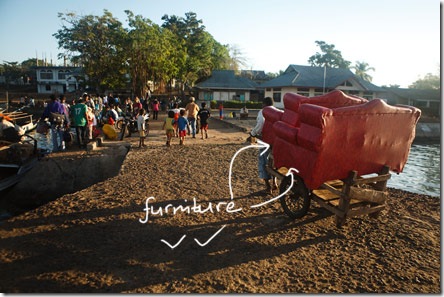
Digital SLR Photography Magazine
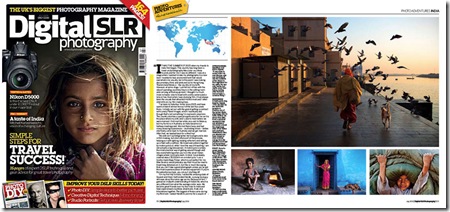 A real quick post. As you can see above, my image is on this month’s cover of UK’s Digital SLR Photography Magazine (well actually it's next month's issue, but it's out now, go figure). It seems that ‘cover people’ like to flip my images, this is the second time my photo was flipped to accommodate the text. Oh well, the pleasant feeling of seeing your work on the cover of a publication you really like, far outweighs any frustration.
A real quick post. As you can see above, my image is on this month’s cover of UK’s Digital SLR Photography Magazine (well actually it's next month's issue, but it's out now, go figure). It seems that ‘cover people’ like to flip my images, this is the second time my photo was flipped to accommodate the text. Oh well, the pleasant feeling of seeing your work on the cover of a publication you really like, far outweighs any frustration.
In the same issue there’s a 12 page feature on my work and some text about my photographic adventures around India. I guess it’s fitting that they put it in the “Photo Adventures” section.
You can obviously buy the magazine in UK and I have also seen it at a few News Agents in Sydney (it will probably get here in a few weeks though).
Bangalore, Pune, Mumbai and Good Bye India.
 Bangalore - we didn’t originally plan to stop in this city, but it was the nearest place from where we could get a train to Pune, our final stop before we’d fly from Mumbai. I didn’t want to ride any more either, but all trains to Bangalore were full and you can’t put a motorcycle on a bus.
Bangalore - we didn’t originally plan to stop in this city, but it was the nearest place from where we could get a train to Pune, our final stop before we’d fly from Mumbai. I didn’t want to ride any more either, but all trains to Bangalore were full and you can’t put a motorcycle on a bus.
I planned to ride the 480km from Madurai to Bangalore over two days, but somehow Tanya and I summoned up enough energy and finishing the ride in one day seemed possible.
480km is the longest distance that I have ever ridden in one day on a motorcycle, anywhere. If I were riding in Australia, this distance would not seem that far, really. But this is India and here distance is not only measured by milestones along the road. It is measured by how many cows, chickens, goats, children and women with firewood on their heads you almost hit (because they almost jumped under your wheels) as well as how many buses and trucks almost hit you (because they are bigger and don’t care). It’s a long distance, almost unbearably long. Your butt feels like it’s burning on the motorcycle seat all the way, but you finally pass the pain barrier after 400km, you stop feeling or caring.
Bangalore – the “I.T. City”, “The future of India”. You could have fooled me by the last 20km of road that leads there. Countless potholes, puddles of black water, construction, everywhere and that horrible, dark smoke, the whole thing felt like traveling through a post-apocalyptical landscape, and then you reach the city itself. I’m sure that Bangalore is as amazing as people make it out to be, but whatever it has to offer, it can offer to someone else. I had no time to discover its charm under the black cloud of traffic smoke; I was to finish my “business” and to head off.
At the railway station we sent what was left of the motorcycle back to my Gujarati friend Hardik, who is now in Ahmedabad (Gujarat’s commercial capital). Then it was our turn to go. We’ve become soft when it comes to public transport. We avoid buses because of the loud music and no leg-room; we avoid the sleeper class on the train because of the countless beggars and hawkers that pass through every other minute and we even avoid the “Three-tier AC”, because it still feels somewhat crowded. So we got two “Two-Tier AC” tickets for our 24-hour train ride to Pune. “Two Tier AC” means that you have a compartment with four beds in it and two beds along the corridor, what it does not mean is that you will get the peace and quite that you long for on a tiring journey. I had to force myself to sleep to the sound of continuous burping, farting and snoring of fellow passengers. At 11:30 pm a young boy with a loud, squeaky voice decided it was a good time to have a conversation with his father about Superman. Oh, the joys of travel on the Indian Railways!
Pune – just a one night stop here, a quick catch up with a friend - Rahul, a young man who had recently spent a year in Germany, a year which radically changed the way he now looked at his own city, his country for that matter. The first time I met him I told him that I thought Pune was very modern and developed. “Modern, developed?! No, this place is not like that! You see a high-rise glass building and then you walk inside and you see the people there, spitting on the shiny floors, throwing their shit around. That is modern? Developed?” With his unusually cynical views and his stories about Pune’s Koregaon Park and the infamous “Osho International Meditation Center” Rahul certainly kept me amused and entertained. I hope I meet him again one day.
Mumbai – the city of dreams for millions. I never liked this place very much, but make no mistake about it, it is absolutely, incredibly fascinating.
One more friend to catch up with in Mumbai – Santosh, an independent filmmaker who works as a sound engineer in various Bollywood drama-series out of necessity. Santosh is one of the most intelligent fellows I have come across on my Indian journeys. Whenever I meet him he tells me countless stories about various places we come past in Mumbai. These stories have probably played a part in forming my view of the city – yes there is crime and there are slums, but there is so much more that you will simply pass by if you are visiting by yourself. So many cultures and sub-cultures and everyone has a story, a fascinating story.
As we walked to a restaurant in Colaba, a place where I usually eat, we passed through the parts of the city where the horrors took place in December. It’s eerie when you hear what happened and picture things, but now, just a couple of months later life goes on as before. Sure there are a few policemen with machine guns, but you couldn’t even imagine what took place in the very same streets, where today people are laughing, drinking and celebrating life. That’s how India is. It doesn’t stop for anyone, nor does it compromise or change because you want it to. It is every bit “The Incredible India” of the romanticized advertisements and it is every bit as dark and hopeless as its worst slums, its deranged beggars and its corrupt politicians.
This trip has exhausted us more than any of our previous visits to the country. I don’t know why exactly. Perhaps it’s the distance we’ve covered by motorcycle or perhaps it is because we understand things a little more now. The naivety is gone and it is not only the exotic, beautiful India that we see these days. We realize just how hard it can be to survive in this country, to live with dignity or to at least make it possible for your children to live with dignity. We haven’t learned something that we didn’t know before, but it has really hit home this time. Our realization however, doesn’t make this country any less fascinating. It is a matter of time until we come back. Although I want to spend a few years seeing other parts of the world, I know that just like this time, when India calls – you simply pack up and go.
Photo: The image at the top was taken on a previous India trip. I shot it in a neighborhood about 500 meters from the famous Taj Hotel in Mumbai. It wasn’t quite what you’d classify as the slums in India, but not much better. Insane contrast, the richest of the rich were staying at the Taj, while the poorest of the poor were living in less than ideal conditions and all that separated them from each other was a five minute walk. It’s the old cliché about India – the land of extreme contrasts, but it is so true and it is still tough to get your head around the whole concept when it comes to the rich and the poor.
The Little Tea-Shack at the end of "Beach Road"
 During one of our days in Kollam we wanted to find out where the "Beach Road" led to, so we decided to ride it south, as long as it followed the shoreline. After passing a couple of fishing villages and beaches we came to a corner, there the road branched off inland. A small shack stood on that corner, smoke was coming out of its windows and people with tea glasses stood outside. Having come to the end of the "Beach Road" and not having any desire to head back to our room, we got off the motorbike and went into the smoky shack. Inside I found one of my favorite photographic places in Kerala.
During one of our days in Kollam we wanted to find out where the "Beach Road" led to, so we decided to ride it south, as long as it followed the shoreline. After passing a couple of fishing villages and beaches we came to a corner, there the road branched off inland. A small shack stood on that corner, smoke was coming out of its windows and people with tea glasses stood outside. Having come to the end of the "Beach Road" and not having any desire to head back to our room, we got off the motorbike and went into the smoky shack. Inside I found one of my favorite photographic places in Kerala.
The shack was a small eatery that served basic food and tea to fishermen and other village folk. There are countless numbers of such tea-shacks all around India, but this particular one caught my eye. The blue wall, with everything on it was like a tapestry that told a short story about the place and the people who live there. Anyone who's been to South Kerala will recognize the symbols of the state in the photograph at the top of the post. The 'subjects', the owners of the tea-shack - Manuel and Anitha Sebastian are husband and wife; they are Catholic Indians, of whom there seems to be a lot along the coastline of South Kerala.
I made three visits to the tea-shack; I would go there later in the morning, after photographing fishermen by the sea. The top image was taken during my last time there, in the first two I couldn't get the couple together; one or the other would always be busy with customers or in the kitchen. Despite not really being able to speak to each other, sign language and some familiar words helped me explain that I wanted to take some photos. Manuel and Anitha found me rather amusing. They thought it was really funny, or crazy (in which case they masked shock with laughter) when I photographed them through the window which expelled the smoke from their cooking. It was one of these cases where photography seemed to brighten up people's mundane, daily routine and they gladly welcomed me into their lives, for a brief moment in time.
Customers kept coming in and out of the shack. After it was known what I was doing inside, it seemed that some came with the hopes that they too would be photographed. Here are some more images from the "Little Tea-Shack at the end of the Beach Road".
 One early Sunday morning I realized that no one goes to work on Sundays, no fishermen would be going out to the sea. Since I had already gotten up early I headed off to the tea-shack in hopes of catching some customers having tea there. This gentleman had just come from church and was reading the news with a glass of tea in his hand. I asked if I could photograph him, he smiled and agreed. Initially he stared directly into the camera, but I asked him to look a little to the side, to make the portrait more casual.
One early Sunday morning I realized that no one goes to work on Sundays, no fishermen would be going out to the sea. Since I had already gotten up early I headed off to the tea-shack in hopes of catching some customers having tea there. This gentleman had just come from church and was reading the news with a glass of tea in his hand. I asked if I could photograph him, he smiled and agreed. Initially he stared directly into the camera, but I asked him to look a little to the side, to make the portrait more casual.
 Anitha cooking parothas, while Manuel prepares them. Manuel managed to communicate to me that everyday they go through 400 parothas, no small task for a tiny place like theirs. This was taken through the window that sporadically expelled smoke from the cooking fire.
Anitha cooking parothas, while Manuel prepares them. Manuel managed to communicate to me that everyday they go through 400 parothas, no small task for a tiny place like theirs. This was taken through the window that sporadically expelled smoke from the cooking fire.
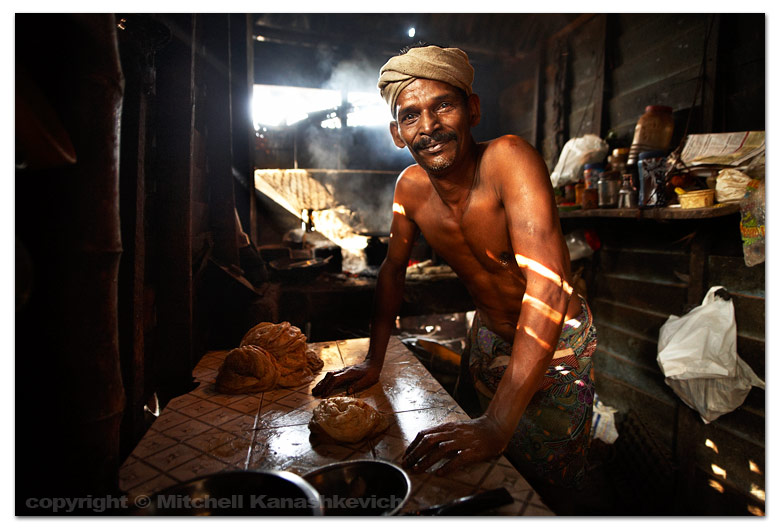 Manuel pauses while making parothas.
Manuel pauses while making parothas.
The rest of the images are pretty self explanatory. All were taken with natural, light that came from the sides, through the windows.
The Spirit of Travel, Cool in the Hills and Tibetan Monks
 If I do not see another Theyyam performance for the rest of my life I will not be devastated. Don't get me wrong, watching these was amazing, surreal, but maybe this is the case of too much of a good thing being not that great. "Theyyam Overload", perhaps. The highlight of our little endeavor into the world of Theyyam must have been the second time we met up with Vipin - the Theyyam artist I mentioned in the previous post. That day, in many ways embodied what travel is all about. It started horribly, we were 'evicted' from possibly the most amazing hotel I've stayed at. Our room's balcony had a view of the Arabian sea. Every morning we watched dolphins splash around within 50 meters from the shore.Long and strange story about the eviction - in short, the hotel was meant for government employees only, but somehow we managed to stay for five days, then some genius finally decided it was enough. The main point is - once you've tasted the good life, it really, really sucks getting back to mediocrity. Getting told to 'vacate' our perfect room and to exchange sea views for views of a sea of traffic on one of the towns busiest and noisiest roads set up what could have been the most disappointing day of our journey, yes the place was that good (and cost about as much as a McDonald's value meal). But that wasn't the end of our bad luck. First we couldn't find any half decent hotel to move to and then my meeting with a professor at the Folklore Academy, the man who had promised to hook me up with some Theyyam artists was cancelled due to an unexpected meeting that could not be put off. I wanted to see him to get reliable information on where I could see more Theyyams. Having been given the wrong information the day before we traveled a couple of hours along a dreadful, traffic filled road for nothing. Now I had to face the fact; I had come to the region to photograph something that I couldn't even find, I really wasn't getting anywhere.
If I do not see another Theyyam performance for the rest of my life I will not be devastated. Don't get me wrong, watching these was amazing, surreal, but maybe this is the case of too much of a good thing being not that great. "Theyyam Overload", perhaps. The highlight of our little endeavor into the world of Theyyam must have been the second time we met up with Vipin - the Theyyam artist I mentioned in the previous post. That day, in many ways embodied what travel is all about. It started horribly, we were 'evicted' from possibly the most amazing hotel I've stayed at. Our room's balcony had a view of the Arabian sea. Every morning we watched dolphins splash around within 50 meters from the shore.Long and strange story about the eviction - in short, the hotel was meant for government employees only, but somehow we managed to stay for five days, then some genius finally decided it was enough. The main point is - once you've tasted the good life, it really, really sucks getting back to mediocrity. Getting told to 'vacate' our perfect room and to exchange sea views for views of a sea of traffic on one of the towns busiest and noisiest roads set up what could have been the most disappointing day of our journey, yes the place was that good (and cost about as much as a McDonald's value meal). But that wasn't the end of our bad luck. First we couldn't find any half decent hotel to move to and then my meeting with a professor at the Folklore Academy, the man who had promised to hook me up with some Theyyam artists was cancelled due to an unexpected meeting that could not be put off. I wanted to see him to get reliable information on where I could see more Theyyams. Having been given the wrong information the day before we traveled a couple of hours along a dreadful, traffic filled road for nothing. Now I had to face the fact; I had come to the region to photograph something that I couldn't even find, I really wasn't getting anywhere.
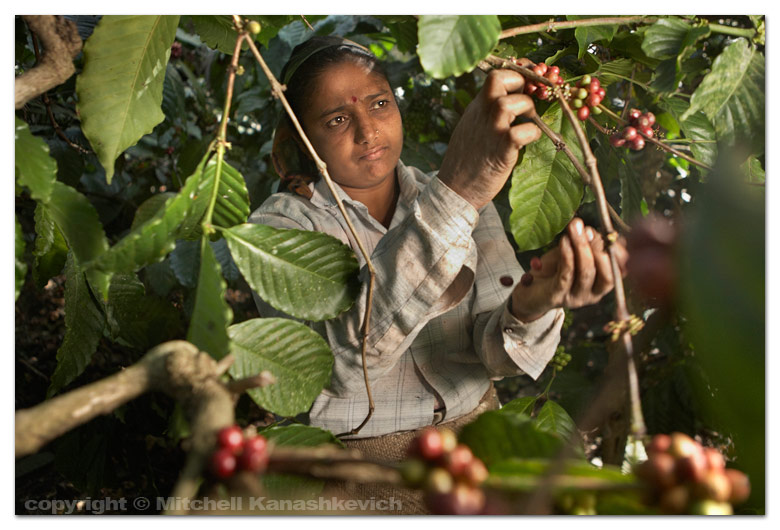 Ready to cry like a child who's been told he's not getting a bicycle after all, I decided instead to go to Vipin's village and give him the Theyyam photos I shot on the night I met him. Vipin was happy to see me and to receive the photos, I couldn't quite match his enthusiasm. But that all changed when he told us that there was a Theyyam performance in his very village. In fact there were two performances that night. These weren't Theyyams aimed at mass audiences, media and tourists, instead I witnessed what was probably as close to Theyyam as it had been hundreds of years ago - raw, sometimes brutal and always full of energy. By late night we had seen a Theyyam performer, possessed by the divine spirit behead four roosters...with his bear teeth, another performer walk through fire and yet another, dance around frantically to some of the most incredible drumming I've heard. We called it a night close to 11pm - real late for rural Kerala. Vipin had been called home a couple of hours before and we were left in the dark, in the middle of nowhere, dependent on our memory to get back. After almost getting lost in the narrow, dark village roads we somehow made it to the main highway that led to Kannur. As we rode the motorcycle back to town, we reflected on the day that pretty much summed up the realities of this life on the road. We were reminded once again that even in the face of the biggest disappointments something amazing could be just around the corner. Knowing that Tanya - my wife was sitting behind me on the bike, ready to face all the obstacles with me also made me realise just how lucky I am.
Ready to cry like a child who's been told he's not getting a bicycle after all, I decided instead to go to Vipin's village and give him the Theyyam photos I shot on the night I met him. Vipin was happy to see me and to receive the photos, I couldn't quite match his enthusiasm. But that all changed when he told us that there was a Theyyam performance in his very village. In fact there were two performances that night. These weren't Theyyams aimed at mass audiences, media and tourists, instead I witnessed what was probably as close to Theyyam as it had been hundreds of years ago - raw, sometimes brutal and always full of energy. By late night we had seen a Theyyam performer, possessed by the divine spirit behead four roosters...with his bear teeth, another performer walk through fire and yet another, dance around frantically to some of the most incredible drumming I've heard. We called it a night close to 11pm - real late for rural Kerala. Vipin had been called home a couple of hours before and we were left in the dark, in the middle of nowhere, dependent on our memory to get back. After almost getting lost in the narrow, dark village roads we somehow made it to the main highway that led to Kannur. As we rode the motorcycle back to town, we reflected on the day that pretty much summed up the realities of this life on the road. We were reminded once again that even in the face of the biggest disappointments something amazing could be just around the corner. Knowing that Tanya - my wife was sitting behind me on the bike, ready to face all the obstacles with me also made me realise just how lucky I am.
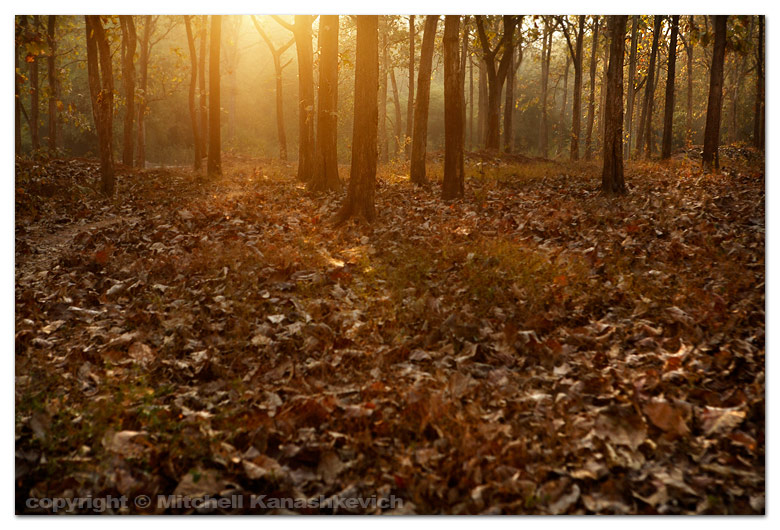 The Theyyam stuff, the heat of coastal Kerala and continuous, hectic rides to the surrounding villages again left us feeling a little drained. We had been contemplating going to Coorg - a hilly region with a cool climate, to refresh for a couple of days, then we'd head back down the coast to Thrissur - one of Kerala's cultural centers. On the map Coorg isn't far from Kannur - 113km. But as always, in India - expect the unexpected. A relatively small patch of the road, known locally as the forest road, was how shall I say - damaged. The damage was so bad that the road looked like it had been bombed continuously for 16 km. I figured that I had traveled on similar roads before, so I didn't make that much of it. BIG mistake! Almost 10km through we started hearing all sorts of noises from our beloved motorcycle. We stopped, I lifted the bike seat and there it was, my worst fear had come true - the motorcycle frame/chasis was broken, snapped right in the middle. To avoid messing things up even more we couldn't continue traveling with all that load and Tanya on the back, and so my poor wife had to walk 6km up a winding, hilly forest road, while I slowly and carefully navigated my way around giant pot holes towards a better road.
The Theyyam stuff, the heat of coastal Kerala and continuous, hectic rides to the surrounding villages again left us feeling a little drained. We had been contemplating going to Coorg - a hilly region with a cool climate, to refresh for a couple of days, then we'd head back down the coast to Thrissur - one of Kerala's cultural centers. On the map Coorg isn't far from Kannur - 113km. But as always, in India - expect the unexpected. A relatively small patch of the road, known locally as the forest road, was how shall I say - damaged. The damage was so bad that the road looked like it had been bombed continuously for 16 km. I figured that I had traveled on similar roads before, so I didn't make that much of it. BIG mistake! Almost 10km through we started hearing all sorts of noises from our beloved motorcycle. We stopped, I lifted the bike seat and there it was, my worst fear had come true - the motorcycle frame/chasis was broken, snapped right in the middle. To avoid messing things up even more we couldn't continue traveling with all that load and Tanya on the back, and so my poor wife had to walk 6km up a winding, hilly forest road, while I slowly and carefully navigated my way around giant pot holes towards a better road.
 We decided to stop for the night at Madikeri - Coorg's biggest town. Our chances of fixing the chasis in this remote region were slim, but Madikeri was our best bet. Again we were facing a very unpleasant situation, but as has happened countless times in India, a stranger came to the rescue. After failed attempts to explain what I need and a few rejections from mechanics and welders who understood, we unexpectedly came across Joe - a catholic Indian man from the coastal city of Cochin. Joe was looking to buy a motor to use for a crop-sorting machine on his spice estate. He came to the same place where we were trying to find out whether our problem can be fixed. After hearing our predicament Joe took it upon himself to help out the guests in his country. The next day his two equally helpful nephews Jeremy and Ronald were involved and although the task became a job of epic proportions (Madikeri is a relatively small town) it was done by the end of the afternoon. It was a little late to head to our next destination and we decided we'd stay another night in Madikeri, that was until Ronald, Joe's nephew called. Ronald found out that I was interested in checking out some tea or coffee plantations/estates and so he invited us over to his estate for the night. We couldn't resist. Another potentially horrible situation had turned in our favor. The next morning we woke up in a mini forest of coffee and pepper bush, as well as some very tall (and apparently expensive) trees. The golden light played it's role in making everything magic. Tanya and I wondered around, appreciated the surroundings and shot a few frames. We expressed our gratitude to our new friends, who saved us and turned a potential disaster into one of the most memorable moments of our journey. Then it was time to move on. Next stop - Bylakuppe - a Tibetan refugee settlement. That's where we are as I type.
We decided to stop for the night at Madikeri - Coorg's biggest town. Our chances of fixing the chasis in this remote region were slim, but Madikeri was our best bet. Again we were facing a very unpleasant situation, but as has happened countless times in India, a stranger came to the rescue. After failed attempts to explain what I need and a few rejections from mechanics and welders who understood, we unexpectedly came across Joe - a catholic Indian man from the coastal city of Cochin. Joe was looking to buy a motor to use for a crop-sorting machine on his spice estate. He came to the same place where we were trying to find out whether our problem can be fixed. After hearing our predicament Joe took it upon himself to help out the guests in his country. The next day his two equally helpful nephews Jeremy and Ronald were involved and although the task became a job of epic proportions (Madikeri is a relatively small town) it was done by the end of the afternoon. It was a little late to head to our next destination and we decided we'd stay another night in Madikeri, that was until Ronald, Joe's nephew called. Ronald found out that I was interested in checking out some tea or coffee plantations/estates and so he invited us over to his estate for the night. We couldn't resist. Another potentially horrible situation had turned in our favor. The next morning we woke up in a mini forest of coffee and pepper bush, as well as some very tall (and apparently expensive) trees. The golden light played it's role in making everything magic. Tanya and I wondered around, appreciated the surroundings and shot a few frames. We expressed our gratitude to our new friends, who saved us and turned a potential disaster into one of the most memorable moments of our journey. Then it was time to move on. Next stop - Bylakuppe - a Tibetan refugee settlement. That's where we are as I type.
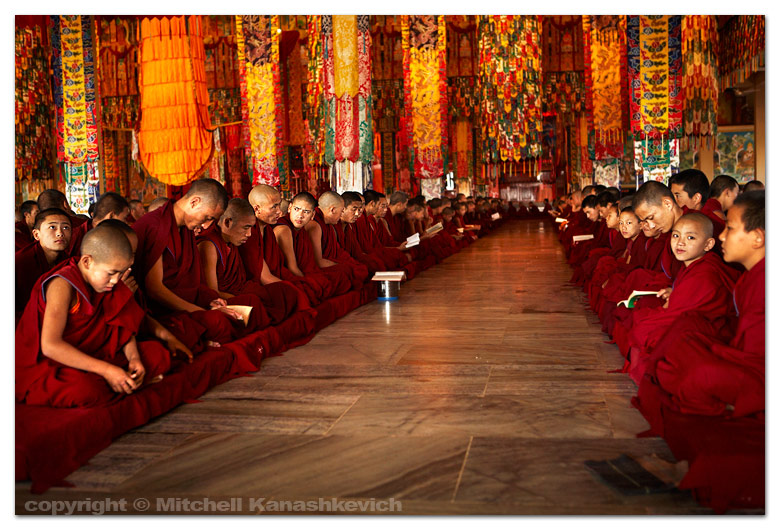 Bylakuppe is a peaceful place, full of maroon robed monks and monasteries. It ain't Himalaya, but there's still something special about it. Monasteries and monks are always photogenic, so we've already spent a few days photographing here. Tomorrow we head off on a little detour, to avoid the dreadful 'Forest Road'. We'll probably end up in Mysore for a few days, then it's on to Wayanad. This cool climate and nature stuff has inspired me to spend some more time up in the hills, in India's forested areas.
Now to the photos. From top to bottom: Monks rushing out after the Morning Prayer, Sera Jey Temple, Bylakuppe. Coffee berry picker at Ronald's estate, Coorg. Morning along the road in Coorg, Kushalnagar region. A mahout washing his elephant at the Dubare Forest Reserve (Forgot to mention we went there. Shot this while standing knee high in water filled with elephant urine and crap ) Bottom: Inside of Sera Jey Temple, Bylakuppe.
Bylakuppe is a peaceful place, full of maroon robed monks and monasteries. It ain't Himalaya, but there's still something special about it. Monasteries and monks are always photogenic, so we've already spent a few days photographing here. Tomorrow we head off on a little detour, to avoid the dreadful 'Forest Road'. We'll probably end up in Mysore for a few days, then it's on to Wayanad. This cool climate and nature stuff has inspired me to spend some more time up in the hills, in India's forested areas.
Now to the photos. From top to bottom: Monks rushing out after the Morning Prayer, Sera Jey Temple, Bylakuppe. Coffee berry picker at Ronald's estate, Coorg. Morning along the road in Coorg, Kushalnagar region. A mahout washing his elephant at the Dubare Forest Reserve (Forgot to mention we went there. Shot this while standing knee high in water filled with elephant urine and crap ) Bottom: Inside of Sera Jey Temple, Bylakuppe.
Back from the Desert and some Street Photography
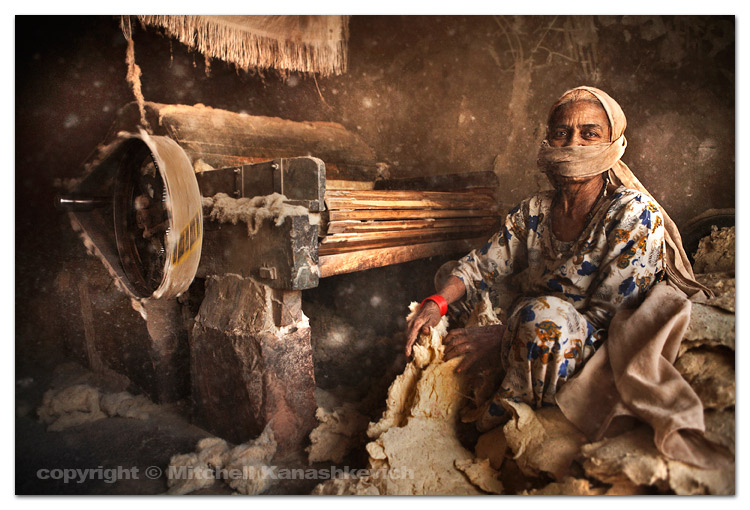 Amidst the madness surrounding the Mumbai bombings it is hard to imagine that there could be a place where people wouldn’t be aware about the tragedy that took place. Well, we have just come back from what is probably just one of many places like that, right in India, about 210 km from Jodhpur, but more like the middle of nowhere. We went on a little camel ride with the old cameleer we met at the Kolayat fair. People in his village are quite oblivious to anything outside their area, no TVs or computers there yet. I was curious whether the cameleers that accompanied us had heard the news, so I asked Hardik to find out. – “We watch, the news…on TV…sometimes” was their answer. The journey itself had its share of madness and adventure, but more on that in the next post.
Before we went off into the desert I did some shooting in the streets of Jodhpur, not much really, however in Jodhpur you can’t help but come across at least something or someone photogenic in a day’s shoot. The old city is full of people who go on about their everyday work in the most photogenic of environments, surrounded by wonderfully textured, stained walls, rusty tea-pots and pans or some strange medieval looking machines. I wanted to capture some of these individuals doing what they do and went out on a little search.
Amidst the madness surrounding the Mumbai bombings it is hard to imagine that there could be a place where people wouldn’t be aware about the tragedy that took place. Well, we have just come back from what is probably just one of many places like that, right in India, about 210 km from Jodhpur, but more like the middle of nowhere. We went on a little camel ride with the old cameleer we met at the Kolayat fair. People in his village are quite oblivious to anything outside their area, no TVs or computers there yet. I was curious whether the cameleers that accompanied us had heard the news, so I asked Hardik to find out. – “We watch, the news…on TV…sometimes” was their answer. The journey itself had its share of madness and adventure, but more on that in the next post.
Before we went off into the desert I did some shooting in the streets of Jodhpur, not much really, however in Jodhpur you can’t help but come across at least something or someone photogenic in a day’s shoot. The old city is full of people who go on about their everyday work in the most photogenic of environments, surrounded by wonderfully textured, stained walls, rusty tea-pots and pans or some strange medieval looking machines. I wanted to capture some of these individuals doing what they do and went out on a little search. The lady at the top of the page (and above) was taking the stuffing out of mattresses; she would put it into the machine which turned the stuffing into what seemed like huge snowflakes. My guess is that this is some sort of cotton recycling; the ‘snowflakes’ would be collected into a bag, weighed in another room and shipped off somewhere. It was a little challenging to photograph in this particular environment, the floating flakes/stuffing goes directly into the nose, eyes and wherever else. I covered my nose with the top of my shirt and shot for a few minutes. By the time I got out I looked like I had a furry hat and Santa Claus eyebrows. For the first shot Tanya helped me with an off-camera flash in a portable soft-box to accentuate the natural light and to give a bit more depth/shape to the face. In the second image natural light is penetrating the woman’s ‘office’.
The lady at the top of the page (and above) was taking the stuffing out of mattresses; she would put it into the machine which turned the stuffing into what seemed like huge snowflakes. My guess is that this is some sort of cotton recycling; the ‘snowflakes’ would be collected into a bag, weighed in another room and shipped off somewhere. It was a little challenging to photograph in this particular environment, the floating flakes/stuffing goes directly into the nose, eyes and wherever else. I covered my nose with the top of my shirt and shot for a few minutes. By the time I got out I looked like I had a furry hat and Santa Claus eyebrows. For the first shot Tanya helped me with an off-camera flash in a portable soft-box to accentuate the natural light and to give a bit more depth/shape to the face. In the second image natural light is penetrating the woman’s ‘office’.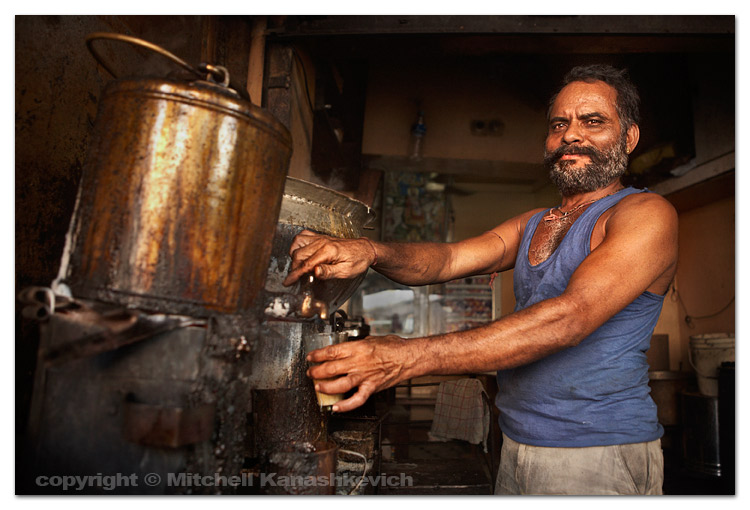 Suraj is a tea maker at a tea-stall just by the first gate (from the outside) to Sadar Bazar. He has worked at the stall for 25 years, while the business has actually existed for 50. Suraj had an almost royal quality about him, the way he went about his work gave the impression that he wasn’t simply making chai, he was running the business, filling up hundreds, maybe even thousands of tea-cups every day and doing it with tremendous dexterity. Again an off-camera flash in a soft-box to accentuate the natural light and sculpt the face.
Suraj is a tea maker at a tea-stall just by the first gate (from the outside) to Sadar Bazar. He has worked at the stall for 25 years, while the business has actually existed for 50. Suraj had an almost royal quality about him, the way he went about his work gave the impression that he wasn’t simply making chai, he was running the business, filling up hundreds, maybe even thousands of tea-cups every day and doing it with tremendous dexterity. Again an off-camera flash in a soft-box to accentuate the natural light and sculpt the face.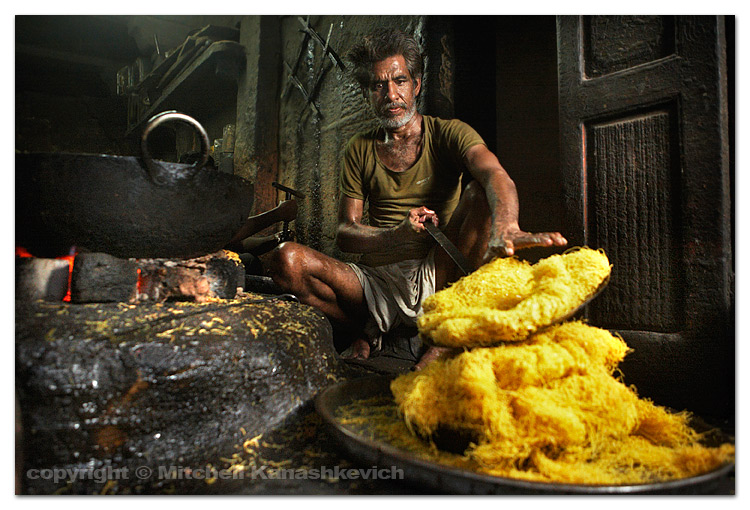 I couldn’t resist taking a few shots of this man making traditional sweets. He would boil the oil with some strange gadget and then unload the content onto the large metal plate. I was attracted to the textures of the scene, but it was getting dark, so once again comes out the flash. Same as in the images above. I find the flash increasingly useful these days, of course I would probably not use it at all if I had to have it camera mounted. I thank God that my wife isn’t sick of carrying it, sometimes in a soft-box around the streets. Surprisingly it hasn’t drawn much attention. When she instinctively put the soft-box on her head in a crowded area some local women had a bit of a laugh.
I couldn’t resist taking a few shots of this man making traditional sweets. He would boil the oil with some strange gadget and then unload the content onto the large metal plate. I was attracted to the textures of the scene, but it was getting dark, so once again comes out the flash. Same as in the images above. I find the flash increasingly useful these days, of course I would probably not use it at all if I had to have it camera mounted. I thank God that my wife isn’t sick of carrying it, sometimes in a soft-box around the streets. Surprisingly it hasn’t drawn much attention. When she instinctively put the soft-box on her head in a crowded area some local women had a bit of a laugh.

